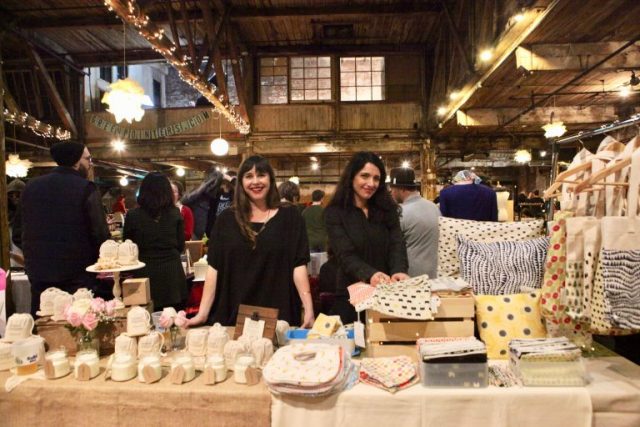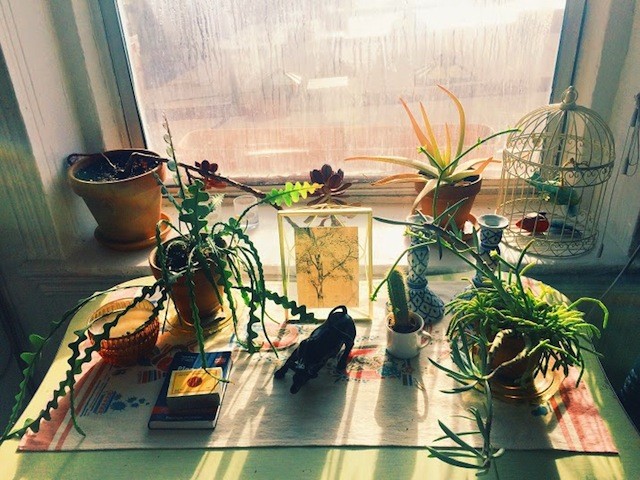
Know why there’s no such thing as a “lamppost hugger?” Because the urban jungle isn’t something you want to embrace and nurture the way you do a tree. And if, like me, breathing in the scent of New York City’s 12 million strangers has you craving a whiff of sweet soil at the end of a long day, then it’s time to get some houseplants. Why? For starters, they purify your air, and transform your paint and plaster quarters into a glowy green sanctuary. Not to mention the psychological benefits. With their self-contained root systems, a few good houseplants can help you feel more rooted in this sprawling metropolis. Plants are self-sustaining hustlers, just like us New Yorkers. Everything that a plant needs to survive is tucked into its terra cotta pot! Well, almost everything.
It also needs you. By tending to houseplants, you’re take an active role in an interspecies relationship. Not the kind you’re thinking of, though. This one is known at “kinship,” and it’s way wholesome. Take it from a bona fide plant whisperer and bryologist (a.k.a moss expert) Robin Wall Kimmerer, who says of plant-human kinship: “[It’s] like a family, we help each other out. […] What is good for life is good for all life, whether it’s green or two-legged or anything other kind.”
What’s good for plant life is good for your life, and here are a few aces that will thrive in your apartment. You can pick up any of these at your corner flower shop — my personal favorite is World of Flowers in Greenpoint — and they’ve all got some wild superpowers.
Golden pothos or philodendron
Average price: $15-25
Superpower: cloning
These plants just want to hang out. Literally. They cascade from hanging baskets, and can be trained to climb. They have long vines and palm-sized leaves and are extremely low-maintenance. Pick up a couple inexpensive metal brackets from the plant shop, mount them in a bright corner and voila, it’s hang-time. These are extremely easy to clone so you can share the plant-love with your homies. Just snip a length of vine and slip its severed end into a vase of water, or replant it in a small bowl with soil.
__________
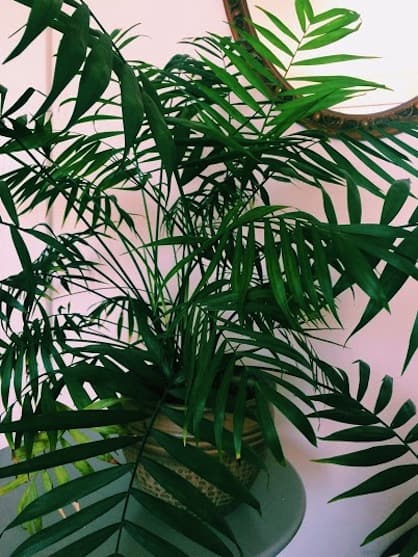
Ferns
Average price: $15-25
Superpower: food source
The sensitive type, but worth it. They like cool, humid air, lots of water, and ambient light. Keep their soil moist by watering a small amount on a daily basis, and mist them every few days, they love it. I put mine in the shower once or twice a week. And you should keep them in your bathroom, since ferns need lots of moisture and only need dappled sunlight. In the spring and early summer, certain types of wild ferns (ostrich) will produce young tender shoots of new growth that are edible and delicious — you know them as fiddleheads (so-named for pretty curled tips that resemble the top of a fiddle). Sauté in butter and they taste like a cross between asparagus, broccoli, and spinach. If you’re one of the lucky ones with outdoor space, try planting a few ferns in a damp, shady spot. In a few years, you’ll reap what you sow — yeah, you have to wait at least a year for them to grow properly, but it’s worth it.
Snake plant
Average price: $15-25
Superpower: air purifying
Snake plants are hardy and respectable. They do well in low-light and can get by on sparse watering. Put ’em in your bedroom! This plant’s blade-like leaves are superb air purifiers. They filter out nasty chemicals like formaldehyde, and whatever comes homes with you from the dry-cleaner. At night, they do their typical plant thing: absorb carbon dioxide and release oxygen.
_____________
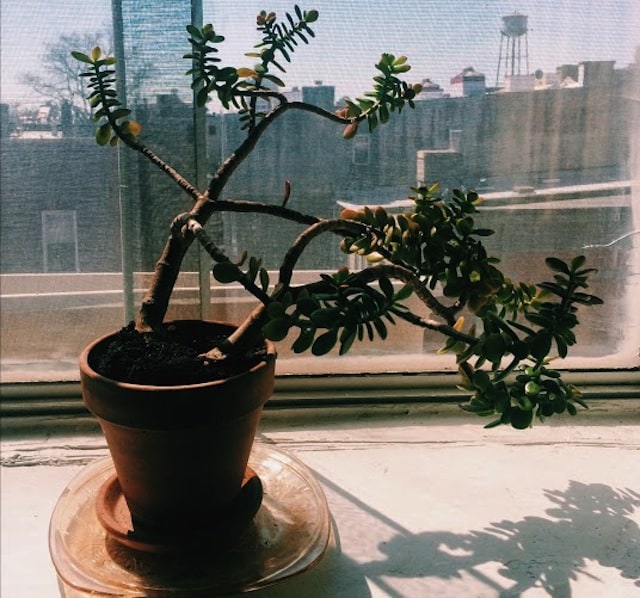
Jade
Average price: $15-25
Superpower: symbolic of wealth
Jade plants have deep green glossy leaves and as they grow they assume beautiful curvy elegant shapes, which makes them lovely natural focal points. They thrive in moderate sunlight and need a drink when their soil is dry to the touch. They tend to be a tad particular – keep an eye on your jade and learn what it likes. I like mine (or mine likes it) on the center of the coffee table because of the way it fills up space. And in addition to being gorgeous, jade just might earn its keep: in some Asian cultures jade is a symbol of wealth and prosperity.
Succulents
Average price: $5-20
Superpower: stoicism and healing
It’s a bit of a commodity in the land of row houses and railroads, and a staid trend among North Brooklynites, but if you’re blessed with a sun-drenched windowsill then you’ve got to get into the succulent game! Succulents store water in their leaves, stems, or roots, which allows them to thrive in arid environments. You’ll be delighted with how these guys flourish, transform and take to their space. Set it on your most desert-like windowsill, where it can live stoically without you. Succulents withstand your absence like champs. And some succulents, like aloe, can double as a healing agent. The magical gel inside an aloe helps heal cuts and burns.
Tomatoes
Average price: Seeds for the tomatoes are around $13; equipment to grow them runs from $20-$100 depending on how fancy you want to get.
Superpower: food, duh
I thought I had the scoop on hydroponics because I owned the Dre 2001 album in high school. But I’ve recently learned that you can use this method to grow stuff beyond chronic. Like fat juicy tomatoes. With hydroponics, your plants receive their nutrients from water, so they don’t even need soil. You’ll need some equipment and guidance for this one, though, so check out The Grow Room in Astoria for advice from the pros. Now, imagine this: it’s Sunday, the sun is shining, and you invite your pals over for pasta and red sauce made from the most ultra-local tomatoes you can find — the ones you grew in your kitchen window. Pick a few off the vine, toss in some basil from the farmer’s market, open a couple bottles of good red and raise a glass to your green thumb.
______________
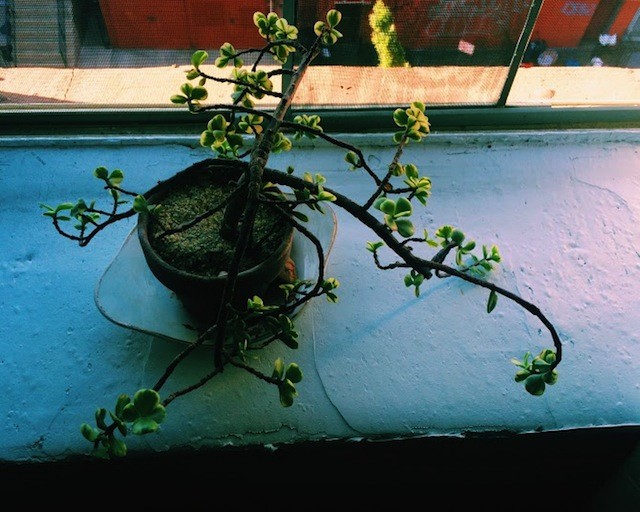
Now that you know which plants are out there, here are some pro tips to keeping them alive:
– Talk therapy. Everybody needs a pep talk sometimes, including plants. I swear that mine look a little more lush on days I work from home. Maybe it’s in my head (it’s probably in my head) but I think they like having me around. Real-life science studies even found that plants may grow a little faster under the influence of audio.
– Location, location, location. Some plants do best displayed solo on a small side table where they can be a diva. Others like their friends around. Sing to your plants, pick them up, move them around a little until you see where they thrive.
– Yellow leaves. They’re a metaphor for life. If your plant has a few dead leaves it isn’t dead. Not even close. Pluck off the dead leaves and move on. This will prevent the plant from sending valuable nutrients to the dead growth, and it can focus instead on nourishing what is flush and flowing. That said, too many yellow leaves probably means too little water or too much, which can lead to root rot, so if your plant is looking wilted, yellow, and sickly then it’s time for some rehab.
Remove the plant from the soil and gently wash affected roots under a running tap. Use clean scissors to trim away the blackened roots. You should also prune about one-third of the plant’s leaves to help the little guy have a better shot at regrowing its roots. Toss the old soil, wash the pot thoroughly, and re-pot in fresh soil.
As you start to foster a unique ecosystem in your very own apartment, don’t be surprised if your plant family becomes increasingly meaningful. Your friends elsewhere may be having their third kid or building their own houses, but take heart: in opting for the concrete jungle, you haven’t shirked interdependency. You and your houseplants, you’re in this together.
Have you bot-any plants lately? Let us know in the comments! And if you took a lichen to Bridget, follow her on Twitter for more plant savvy: @toobridget2quit.
Leave a Reply


